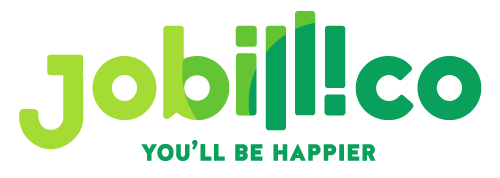7 Ways to Stand Out During a Job Interview
 Publié le 12 December 2024
Publié le 12 December 2024
Be noticed by hiring managers for all the right reasons by knowing 7 ways to stand out during a job interview.
Standing out during a job interview can be the difference between receiving a job offer or just another “thanks, but no thanks” email. Fortunately, attending a remote job interview doesn’t mean you have to be just another face on the screen.
From the onset of the pandemic, the use of video interviews went up by a staggering 57%—that’s good, right? At first glance, you don’t have to commute, lose time or dress up excessively, but there’s also a downside. Simply put, there are fewer opportunities to stand out.
With this in mind, we picked out several key strategies that can set you apart from the competition without having to jump through hoops. No gimmicks needed; only the usual interview prep and a pinch of self-confidence. Here are 7 ways to stand out during a job interview and impress a hiring manager for the right reasons.
1. Research the company at a deep level
Almost every candidate knows to check out the company’s website and memorize a few facts. But if you want to stand out, dig deeper and come up with a plan to impress them with your research prior to the interview. Investigate their latest press releases, recent financial statements, key competitors, and their industry outlook.
Understand the company’s challenges and think of how your skills can directly address those challenges. If they’ve launched a new product or service, reference it and relate it to your own experience. Or better yet, test it and think about how your expertise can make it better.
If you’re applying for a security analyst role, for example, you can prepare a plan on how you would implement zero-trust WiFi solutions to improve overall security or point out some glaring weaknesses. Likewise, a graphic designer could provide sketches and ideas about UI/UX improvements, as well as branding.
However, research doesn’t just involve zeroing in on the company in a vacuum and memorizing its LinkedIn profile—it also means staying updated on industry news and trends.
Subscribe to relevant trade journals and network with professionals in the same industry, and understand the current pain points that companies like the one you’re interviewing with are facing. If the company recently went through a merger, for instance, think about how that impacts their workforce and operations, and tailor your conversation accordingly.
2. Present solutions, not just qualifications
Every job listing is essentially a problem that needs solving. Frame your answers around how you can solve these problems.
Instead of saying, “I have five years of experience in marketing management,” say, “With my five years of experience in marketing management, I’ve streamlined operations by 20% in my past role, and introduced a QR code generator that made it easier for customers to sign up. Here’s what I believe your marketing strategy could use…”
As you can see, highlighting solutions communicates your proactive mindset and direct value to the company. You’re not just looking to impress them, but instead to earn your keep by contributing to the company.
Take this further by preparing a 30-60-90 day plan—outline what you would do in the first three months in the role. This shows the interviewer that you’re not just capable—you’re ready to hit the ground running. You can use this plan during the interview as a discussion point to demonstrate your proactive approach.
3. Master the STAR method for behavioral questions
The STAR method—Situation, Task, Action, Result—is a structured way of answering behavioral questions that allows you to showcase your skills without rambling. Prepare stories in advance that exemplify your experience, and make sure they are tailored to fit the company’s values.
Highlight the impact you’ve had in your previous roles and directly relate them to the job requirements. Behavioral questions are an opportunity to tell stories that connect your past experiences with their present needs.
Moreover, a powerful STAR answer doesn’t just tell the interviewer what you did—it quantifies the results. If you managed a project, mention the exact metrics of success. For instance, “I led a cross-functional team on a project to reduce churn, which ultimately decreased customer attrition by 15% over six months.”
Having specific examples ready shows you’re detail-oriented and results-driven. To put it simply: if you’ve done things they need you to do, you’re more likely to be chosen to do them and be paid handsomely for that.
4. Personalize your answers based on the interviewer
If you’ve done your homework, you should know a bit about your interviewer, especially if they’re a department lead or hiring manager. Mentioning how your goals align with the growth of their specific department or how you admire their achievements (based on their LinkedIn profile, perhaps) adds a personal touch.
This kind of personalization shows your genuine interest and makes a lasting impression. You’re no longer just another candidate—you become the candidate who understood them.
Take notes during the job interview to help you personalize your follow-ups as well. After learning more about the team or specific challenges they mentioned, refer back to these points in your thank-you email. It’s an almost effortless move, but it demonstrates that you actively listened and are already thinking about solutions, and is an excellent way to stand out.
5. Ask high-value questions
When the interviewer inevitably asks if you have questions, make sure you’re not asking generic things like “What is the company culture like?”
Instead, dive into specifics—for example, “What are the biggest challenges facing the team I’d be joining?” or “How does the company measure success for this position after the first six months?” These questions demonstrate your desire to be impactful, your curiosity, and that you’re already envisioning yourself in the role, contributing to the team.
Another way to make an impression is by asking forward-thinking questions. For example, “How do you see this role evolving in the next two years?” or “How do current industry trends impact your strategic direction?”
These types of questions not only demonstrate that you’re thinking long-term but also that you have a broader understanding of how the role fits within the company’s strategy.
6. Bring tangible evidence of your work
Don’t just talk about your accomplishments—show them. Create a portfolio of your work if applicable, instead of just listing the positions you held. Provide charts, data or even detailed presentations of examples that prove the impact you’ve had.
Physical evidence gives weight to your words and shows you’re well-prepared. For roles in tech, marketing, or project management, this might mean a polished slide deck or detailed project overviews. Whatever the field, including tangible evidence in your portfolio brings an undeniable truth to your claims.
Consider crafting a case study around one of your most significant professional achievements; just don’t forget to remove any confidential information. Walk the interviewer through your problem-solving process, and use visual aids if possible. Whatever results-oriented role you’re applying for, data visualizations can make your achievements clearer and more compelling.
7. Be authentic and energetic, but keep it professional
There is a fine line between being authentic and coming across as unprofessional. Many candidates put on a persona that doesn’t fit them—something interviewers can see through immediately.
Instead, maintain a positive attitude during your job interview, let your enthusiasm show, and balance it with genuine, thoughtful responses. People are naturally inclined to hire someone they feel they can get along with—even if the candidate is in the midst of a career change. Authenticity, when combined with professionalism, leaves a positive, memorable impression. 84% of recruiters consider cultural fit as crucial when hiring, so you’d be surprised how often it trumps pure talent and achievements.
Think about what excites you about the role and the company. Let that shine through in your answers. If you are passionate about the company’s mission, articulate that with specific examples or reasons. Enthusiasm is contagious, and interviewers often look for people who genuinely want to be there, not just those who need a job.
Conclusion
Standing out in a job interview is about being memorable for all the right reasons—deep knowledge of the company, demonstrated problem-solving skills, and a genuine, tailored approach. To achieve this, prepare thoroughly by using 7 ways to stand out during a job interview. Know the company inside and out, practice articulating your strengths in terms of real-world outcomes and think deeply about how you can be an asset from day one.
We know it seems scary at first, but try to avoid clichés and keep your approach clear, direct, and valuable. And that’s ultimately what an employer wants: someone who doesn’t just fit into the role but increases its value compared to the predecessor. Take these actionable steps, practice them, and be prepared to stand out for all the right reasons. Good luck!







